Utah Abroad Bloggers are students who are traveling the world and earning academic credit through University of Utah Learning Abroad programs. Check out their stories here!
Don't wanna be here? Send us removal request.
Text
South America Global Entrepreneurship Program Comes to an End
By: Jessie Jolly, Social Media Scholarship Recipient Spring 2019, Global Entrepreneurship in South America
The South America Global Entrepreneurship Program has officially come to an end and the students are back home. In the last month of the program students finished up their internships, squeezed in final weekend trips around Chile, wrapped up their spring semester classes and finished it all off together exploring the historical city of Cusco nestled in the Peruvian Andes. We had a diverse group to begin with- students who were well travelled, students who had never left the United States before and most had grown up in completely different environments from one another. Even though we all came from such different backgrounds and had different goals for coming on this trip, I feel as though we all came home with some similar lessons learned. Throughout our trip we were all pushed outside of our comfort zones at different times, we each gained new friendships and I’m sure all of us returned home with a new perspective on life.
January and February seemed to breeze by so quickly for us. We were all so immersed in school and our internships those first months that it was nice to come up for some air in March and April. By the last week of March everyone’s internships had come to an end which left us with only one last class to focus on for the remaining of the trip. This allowed us with a bit more time to explore Chile and say goodbye to all of our friends that we had made throughout the experience.

In April we took our final trip as an entire group to Cusco, Peru. Here we were all stunned by the beauty of the Andes, constantly awed over the colorful and lively culture of the Incas and indulged in the famous Peruvian cuisine as though each meal were going to be our last. We even had the opportunity to tour one of the wonders of the world together- Machu Picchu. If our time in Chile wasn’t memorable enough, I’m sure the last week we spent in Peru absolutely made this study abroad a trip none of us will ever forget.
By the end of the trip I couldn’t help but be so proud of all the students and faculty who participated in this amazing program. Like I mentioned earlier, some students on this trip had never had the opportunity to travel this far or for this long prior to the Global Entrepreneurship Program. Everyone pushed the boundaries of their comfort zones and tried new things, we all made irreplaceable friendships with each other, people we met along this journey and with our professors, and we all view life through a slightly different lens now. Some of us came here thinking that South America would be a once-in-a-lifetime experience, but after this trip, I am sure that won’t be the case. Three and a half months of living abroad just isn’t enough. We learned that South American people have seen their fair share of heartache. They’ve faced numerous natural disasters, endured civil wars, and continually battle corrupt governments, poverty and hunger. Despite all of this, the warm and welcoming nature of everyone we encountered while living here and the beauty of the countries we visited proved so much resilience and strength and definitely deserves another visit. We know we’ll be back.
The South America Global Entrepreneurship Program is a trip I will always cherish. If you ever have the opportunity to participate in one of these programs, I highly recommend you jump on board! No need to think twice 😉
2 notes
·
View notes
Photo



By: Jessie Jolly, Social Media Scholarship Recipient Spring 2019, Global Entrepreneurship in South America
Machu Picchu with the #uglobalentp South America group // #machupicchu #universityofutah#throwback #peru #ubusiness#ecclesglobal #utahabroad
1 note
·
View note
Photo







By: Jessie Jolly, Social Media Scholarship Recipient Spring 2019, Global Entrepreneurship in South America
Perfect weekend getaway to Viña Del Mar, Valparaiso, and Concón 🌊🌊🌊
0 notes
Photo








By: Jessie Jolly, Social Media Scholarship Recipient Spring 2019, Global Entrepreneurship in South America
Squeezing all that we can out of this last month in Chile. Had so much fun exploring the Atacama desert in San Pedro this weekend! 10/10 would recommend 😉
0 notes
Text
8 Things You Need to Know About Easter Island
By: Jessie Jolly, Social Media Scholarship Recipient Spring 2019, Global Entrepreneurship in South America
1. Plan ahead! Because WiFi hardly exists
I’m typically the type of traveler who likes to keep my options open and not plan too much when going on a trip. I like knowing that I’m flexible and available to be a yes girl in case an unexpected opportunity comes up. However, when visiting Easter Island this is a very bad tactic. You need to plan your whole trip ahead of time or else you’ll end up wasting a whole day at the community park trying to use their free WiFi to learn what your options are. WiFi hardly exists on the island so it is really hard to spontaneously look things up or visit the coveted Trip Advisor website to help advice you what to do for the day when travelling. I’d suggest you download an offline version of the map and drop some pins on it of places you want to visit. Do any research about the island BEFORE you come because it is nearly impossible to do while there.

2. Where to stay
The island is pretty small and really only has two towns- Rapa Nui region and Hanga Roa. When searching for your accommodations, you’ll want to make sure that you are looking in Hanga Roa. That is where you’ll be conveniently close to night life, the majority of shopping and really just anything that might be going on on the island besides sightseeing. Don’t worry about being far away from Rapa Nui if you’re planning on visiting it (which you definitely should), because you’re really only about a half hour car ride away. Just trust me on this, you’re best off staying in Hanga Roa.
3. Rent an ATV
On the island you have four options for motorized transportation rentals: a scooter, a motorbike, an ATV or a car. Definitely go with the ATV! Not only is it a lot of fun to cruise the island on, but you can get to a lot more places that the others might not be able to, it is cheaper than a car and you don’t need a special drivers license to use it like you do for the scooter and bike. Remember that you’re on an island so plan for a little rain every once in awhile. If you have equipment with you or are going to be carrying a lot of things around with you while on the go, maybe a car would be a better fit so that way you can protect it from the rain and lock it up when you don’t want to carry it around with you. But if you’re up for an adventure and getting your hair a little wet doesn’t scare you, the ATV is the way to go!
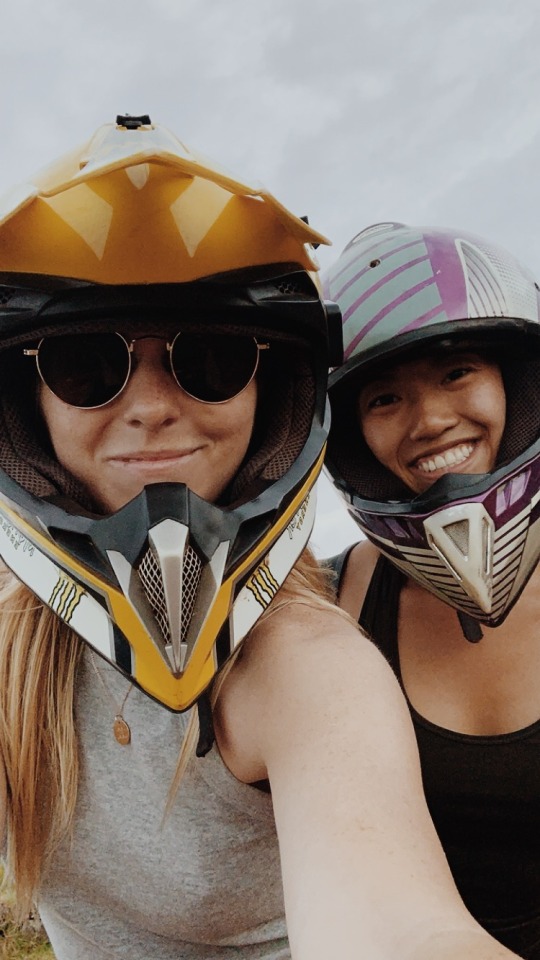

4. Best way to see the moai
Most people are drawn to Easter Island to lay their eyes on the moai statues. There are nearly 1000 spread throughout the tiny island, so there is no way to miss them. One of my favorite things we did was visiting Ahu Tahai at sunset and Ahu Tongariki at sunrise. Pack a picnic and hang out on the lawn in front of Ahu Tahai one night and enjoy the sunset behind the statues. For Ahu Tongariki maybe bring an extra blanket to wrap up in and some hot chocolate to sip on because it can get quite cold in the night and you’ll want to make sure to get there early for a good viewing spot. After sunrise at Ahu Tongariki hop over to Rano Raraku and spend some time exploring the moai fields and learning about how and where they were all made. You’ll won’t be too far from Anakena beach at this point, so you can plan on spending the rest of your day there.


5. Anakena beach
Anakena beach has some of the best preserved moai on the island. They are called Ahu Nau Nau. They were left buried in the sand when knocked down during the clashes between the different clans of the island years ago. This allowed them to be more protected from erosion. Aside from Ahu Tongariki, these were my favorite moai on the island nestled between palm trees on a white sandy platform with the turquoise blue water behind them. Don’t just come to Anakena beach to see the moai though. Make sure to pack your swimsuit and towel when heading this way because this beach is perfect for spending the day at sunbathing and playing in the water. There are a couple of restaurants here too, so you don’t need to worry about packing extra food.


6. Be prepared to spend money
When travelling to Easter Island you’re most likely coming from South America. There you were probably enjoying living like a king with the exchange rate working in your favor, however you’re in for a rude awakening when arriving at Easter Island if you’re planning cheap eats and accommodation like how it most likely was in the country you are coming from. You can’t forget that Easter Island is the most remote inhabited island in the South Pacific Ocean. So, having food imported to them is not an easy task and this drives up the prices. Make sure you’re prepared to spend some serious money while here.
7. Other ways to spend your time
The island is small, and you may feel like once you’ve visited all of the famous moai viewing points you’ve done it all, but think again! There is plenty more to do and see on the island besides just that. Make reservations to watch a cultural dance one night during dinner. Visit the crater and linger along the scenic drive up to the top. Go on a hike and explore the different caves on the island. If you’re looking to get in the water maybe take a boat ride, go diving or you can even spend the day surfing!


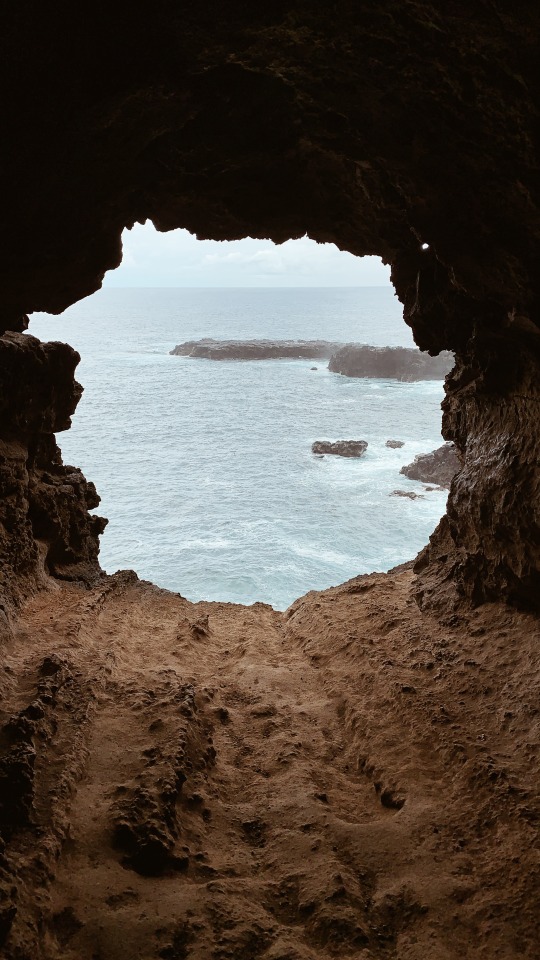
8. Keep your eyes peeled for guava
Last thing you need to know is that if you’re ever in an emergency state of hunger because how expensive it is to eat out here, just go to a nearby field and look for guava. The island is full of guava plants! This was a life (and wallet) saving discovery that I made one day while on a long hike.

0 notes
Text
Punta Arenas, Chile
By: Jessie Jolly, Social Media Scholarship Recipient Spring 2019, Global Entrepreneurship in South America
Day 6 // 6 days full of friendly fluffy dogs, empanadas, views I couldn’t even dream up, and new friends. I think I’m going to be okay here. #utahabroad










5 notes
·
View notes
Text
My No Sleep 5 Day Cusco Itinerary
By: Jessie Jolly, Social Media Scholarship Recipient Spring 2019, Global Entrepreneurship in South America
Day 1- Acclimate
On my first day here some of the girls from the uglobalentp program and I set out to explore the historic city of Cusco. We weaved our way through the streets becoming acquainted with what would be our new home for the next few days. Cusco has an elevation of 11,152’ and I knew I had some big hikes ahead of me the following days, so I choose to take it easy this day as an attempt to acclimate to the altitude. We did some horseback riding, saw the Saqsaywaman ruins, enjoyed some artisan ice cream (this had become a tradition for everywhere we travelled together), and played with alpacas and llamas in the streets.
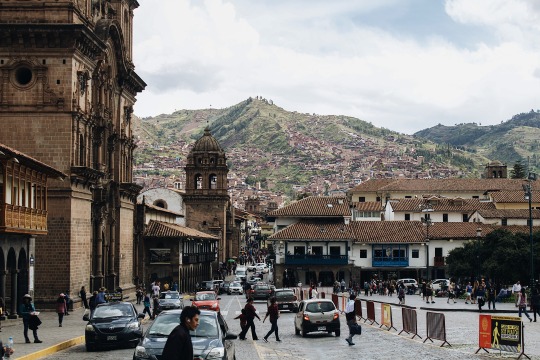
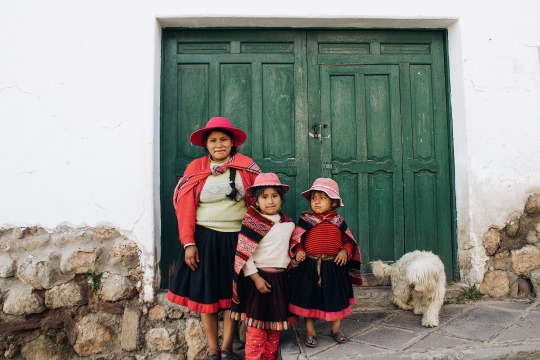
Day 2- Machu Picchu
Day 2 our entire group went to Machu Picchu. The day started way too early in the lobby of our hotel. We needed to meet at 4:30am to start our journey to Machu Picchu that would consist of two busses and a train ride that equate to over six hours of travelling. Luckily the route is known as being one of the most beautiful in the world and we knew the destination was going to be well worth it.
Upon arriving to Aquas Calientes, we had a bit of time to explore the town before hopping on the shuttle that would take us up to the ruins. This allowed us to walk along the river and learn a little bit about the city that sits right at the base of it all.
The entire morning had been pretty cold, and rain was in the forecast, yet somehow we lucked out and were blessed with beautiful weather to tour this wonder of the world with. It was so neat to walk around and learn about the legends of the ruins and the Inca Empire. We were also told that the Machu Picchu is an energy vortex and that was a big reason why so many people would travel to it previously.
After our guide left, we all took some time to explore on our own and meditate for a bit before meeting at the train station for our long commute back to Cusco.
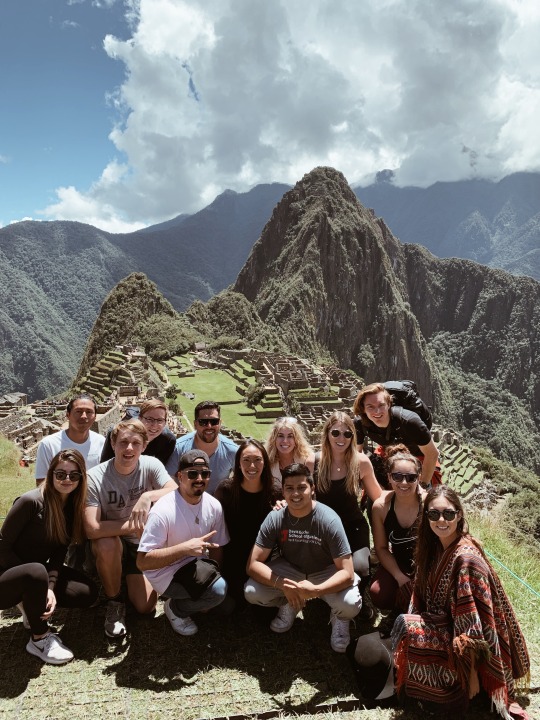
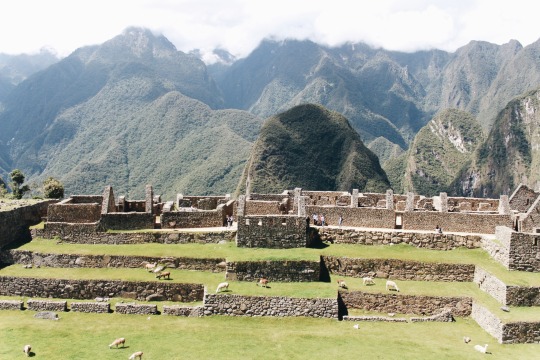
Day 3- Rainbow Mountain
After touring Machu Picchu the day prior, I went and visited the hot springs of Aquas Calientes. I had done this a few years prior when my mom and I backpacked Peru together, so I went to the hot springs in her honor. Thankfully I did because it was there that I met a group of British travelers who invited me to join them the next morning on a hike to Rainbow Mountain. I had been wanting to do this for years and had tried to reserve a tour for myself but ran into so trouble because of the lack of WiFi. I was so excited when I learned that they had an extra seat in their van and wanted me to join them.
This called for an early rising as well. I met at their hotel at 5:00am where we started our three-hour commute to the trail head. I loved talking to each of them on the car ride and learning more about what their ‘why’ for travelling was. One of my favorites was this Scottish man in his 60’s. Steve is his name. His youngest brother had been murdered when he was only 20 years old. Steve told me that he had committed to summit Mount Kilimanjaro in his brother’s honor. He has attempted the hike three different times now and has had to turn around each time because of altitude sickness. Mount Kilimanjaro is 5,895 meters and he has never been able to make it past 5,000m. Rainbow Mountain is 5,200m. It was so special to be able to hike along side of him and cheer him on as he approached 5,000 meters and then embrace him and cry with him at the top when he had made it to 5,200m. He carries a picture of his brother with him at all times and told me how he has traveled the world with him. He died too young to see the world, so Steve has made it his mission to see it for him. He plans on attempting Mount Kilimanjaro again now that he has finally successfully pushed himself beyond his elevation limit. It was one of the most inspiring encounters I had ever had.
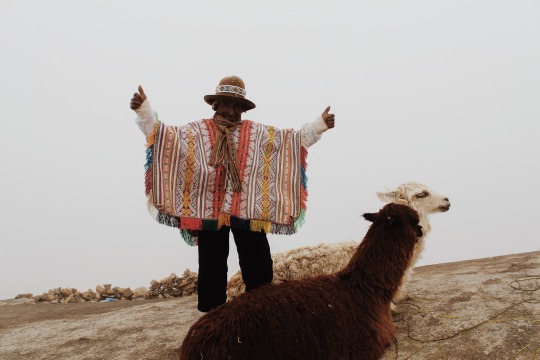
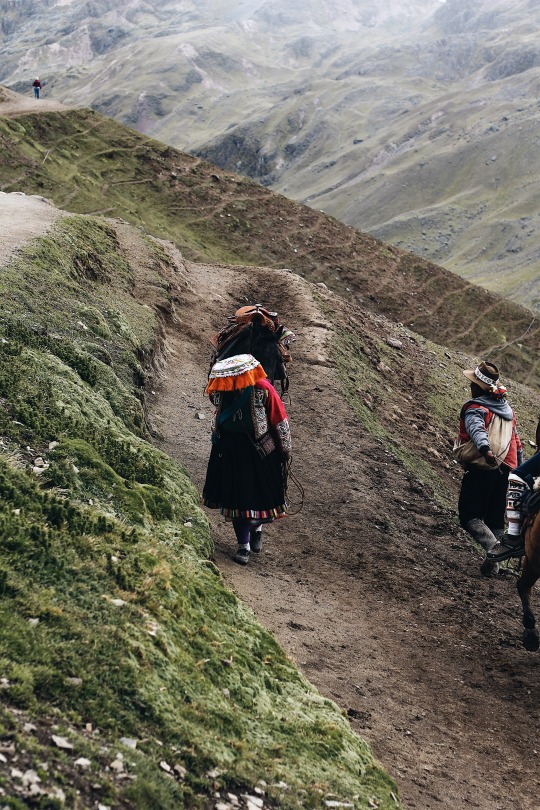
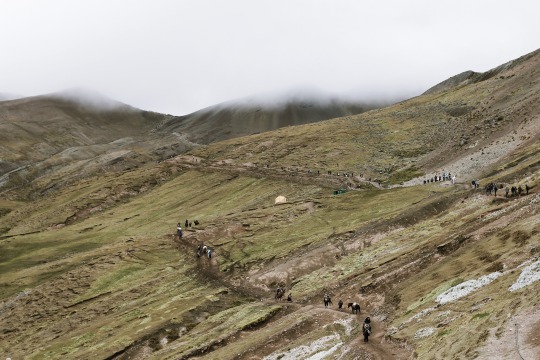
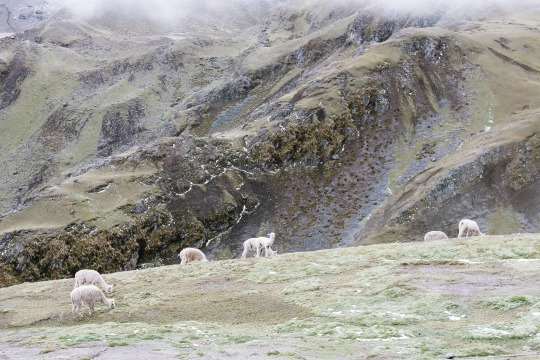
Day 4- Lake Humantay
On day 4 I had planned to explore Lake Humantay. Another destination that had been on my bucket list for a while. Can you guess what time I needed to wake up for this excursion? That’s right, 3:30am again! With another three-hour commute. I was so exhausted from travelling, hiking, and an extreme lack of sleep from the previous days that it was really easy to just sleep the entire car ride to the trail head. We started this hike by hiking to a nearby village and sharing a meal with other hikers. Then it was only about an hour and a half hike up to the lake. Although it was shorter and a lower altitude then the hike, I had done the day prior, I found it to be a lot harder for some reason. During breakfast I met two sisters from Dubai. They noticed I was travelling alone and decided to take me under their wing. I loved hiking up with them and hearing about their adventures together and life in Dubai.
The hike up to the lake was breathtaking. I couldn’t keep my jaw closed because of how impressive the surrounding Andes mountains were. I thought it wasn’t possible to get any better than all of the colorful Peruvian guides that were hiking beside me, the majestic glaciers in front of me or the waterfalls flowing from each dip in the peaks everywhere I looked, but I’ll never forget the way I felt when I first laid my eyes on the lake. Yeah, I had seen photos of the lake prior, but I figured they were photoshopped and over saturated just like most nature tourism photos are. However, once I saw this in real life, I knew there was no need for anyone to over work a photo of it because it truly was just as beautiful, if not more beautiful, as all of the photos you see of it elsewhere. The mountains surrounding Machu Picchu are known to hold a special energy, but in my opinion, this location’s energy was more apparent.
At the end of the hike we regathered in the same house we had breakfast at and now shared lunch. During breakfast we all sat with some distance between us and kept to ourselves. However, our group who had once been a bit segregated previously was now acting like one big family. When you travel to places like this and share such special experiences, I think it is nearly impossible to leave without feeling a deeper connection with those you encountered it with. Not only did I get to see one of the most beautiful landscapes this day, but I made a ton of new friends from all over the world.
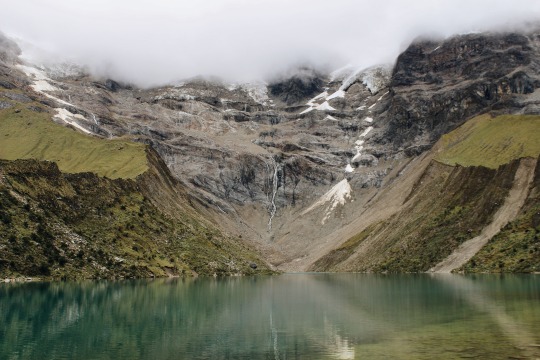
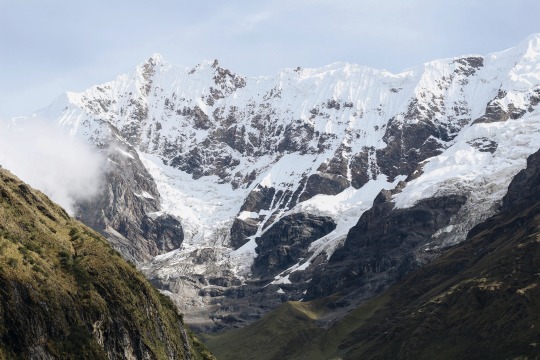
Day 5- Souvenirs
Hooray for day 5! Yes, I was so sad to be leaving Peru, but I was so happy to sleep beyond just a few hours. Day 5 was my recovery day. I slept in, packed and spent the day wandering the streets of Cusco shopping for souvenirs to bring home to family and friends. My friend Laurel and I stopped for some lunch at a little hole in the wall restaurant we found and liked it so much that we ordered a second meal to take with us on the plane.
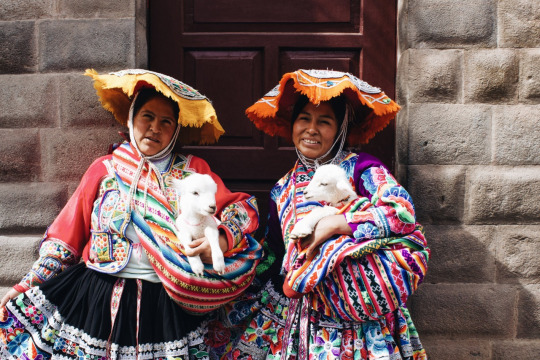
A few lessons learned from this trip would be:
1- You can sleep when you’re older, just say yes!
2- Don’t be afraid to venture out on your own. You never know who you might meet.
3- Peruvian cuisine is just as worthy of being a world wonder as Machu Picchu. It’s so good!!
0 notes
Text
Patagonia, Chile
By: Jessie Jolly, Social Media Scholarship Recipient Spring 2019, Global Entrepreneurship in South America






3 notes
·
View notes
Text
Global Entrepreneurship Program Update
By: Jessie Jolly, Social Media Scholarship Recipient Spring 2019, Global Entrepreneurship in South America
Welp it’s official. We have finally reached our halfway point and are on the tail end of our trip to South America. Even though we have only been here for two months, I think I can speak for all of us when I say Chile now feels like home and we’re not ready to think about it coming to an end quite yet. We’re now settled into our internships, have developed close relationships with the other international students living at our apartment complex, and have gotten into a good routine with our classes. Here is a recap of what we’ve been up to so far.

When we first arrived in Chile near the beginning of January, we made our way to the southern most part of the Patagonia region. We spent a week exploring the historic town of Punta Arenas, admiring the picturesque views in Torres del Paine and visiting the penguins on Magdalena Island. This is where we were first introduced to Chilean culture and to the rest of the group that we would be spending the next few months with. After getting to know one another and bonding in Punta Arenas, it was time to fly back to Santiago and get to work.


Santiago is our home base here in Chile. It is where we live, work and study- and we couldn’t think of a better place to be. Since being here we’ve had the chance to visit multiple companies such as IBM, Corfo, and Costanera where we were able to learn more intricate details about their companies and process. We have finished 3 out of the 5 entrepreneurship classes we are enrolled in and have matured in our internships. During the week days we all stay really focused on our internships and studying, but we have been good about finding balance and allowing time for fun in the evenings and over the weekends such as group dinners, frequenting the beach, and exploring the nightlife of Santiago.
We live in an international student housing complex located in the heart of Santiago. It has been a pleasure getting to know the other residents here who come from all over the world and having the opportunity to learn from so many different cultures. The diversity that we encounter is like none other and has made each of us become so much more culturally aware. We really enjoy living here and touring the country with our new friends.



Overall it has been an unforgettable experience thus far and we’re each still starving for more. The classes we have taken, the networking we’ve done, and all of the places we have visited has been unreal. We’re looking forward to future plans the Global Entrepreneurship Program has in store for us and are so excited that we still have plenty of time to soak in all the great things that Chile has to offer.



6 notes
·
View notes
Text
By: Jessie Jolly, Social Media Scholarship Recipient Spring 2019, Global Entrepreneurship in South America

@uglobalentp
Meet @jessiejolly93, another student from our #uglobalentp South America program.
Jessie graduates this summer with her major in International Studies with an emphasis in Sustainability and Development, a minor in Business Administration and an entrepreneurship certificate. She had the opportunity to work as the sustainability and business strategy intern for Olisur during our semester in Chile. During her internship she built the company’s philanthropic branch, helped strategize and coordinate more sustainable business practices and worked closely with a nonprofit in an effort to replant a million trees. She says she loved her experience abroad with the program for the unique classroom experience and authentic relationships she was able to build with her professors, pushing the boundaries of her comfort zone and overcoming new challenges that come along with being fully immersed in a different culture, the incredible friendships that were forged along the way and the opportunity to explore the richness of South America in more depth.
We know she’ll be back soon 😉 //
1 note
·
View note
Video
youtube
By: Daniel Steiner, Social Media Scholarship Recipient, Summer 2017, Film And Media Arts in Italy
Social Media Scholarship Submission
0 notes
Text
Exploring Germany through Career Development and Research Experience
By: Rachel Payne
Program: Chemistry Research in Germany
Term: Summer 2018
“The process of elimination is more about being willing to try something new than being able to reject something outside the scope of your view. I tried something new and I didn't enjoy it. More than being a waste of time, it refined my view of the future.”

Earning the Career Development Badge:
Work in Germany wasn't easy, particularly in my lab. Expectations were extremely high and staying overtime was normal. Over time, I found myself dragging my feet into work, dreading the monotonous flow of reactions that would absorb my time. Eventually my research postdoc caught my lack of enthusiasm and asked what he could do to help. After a lengthy conversation over lunch, the situation improved. As it turns out, organic synthesis just isn't my area of interest. I love the process of research, the questions, the analysis, even the experimental writeups: I just don't enjoy the subject itself. Upon returning to the United States I enrolled in entirely new coursework in nuclear engineering. Turns out I love it. Now I am very involved with nuclear research, working my way towards radiochemistry graduate school. Without the experience in my German lab, I likely would not have traveled the same career path.
Earning the Research Experience Badge:
Resiliency is the key to success in science and research. There were many times in my lab when I would put days' worth of work into a synthesis scheme, only to have molecules turn out impure or unusable. For example, I spent an entire week on purification of a single fluorescent target, only to have the analysis data tell me it wasn't even there to begin with! The entire time I had been isolating one of the impurities. My only option was to go back to the drawing board, reconsider my synthesis plan, and then try a different method. As my postdoc pointed out, there wasn't any use to dwelling on my failure; I should learn from my mistake and move on. In order to succeed, I must be able to fail and move on from that failure. Some problems can't be solved with one swift answer, especially in research.

Transferable Skills:
I learned to collaborate with others in the lab, discovering that the wisdom and experience of my coworkers could push my project to the next level. I now use a greater degree of collaboration in my job as a pharmacy technician as well as in my research efforts here at the University of Utah. I have a better tendency to ask others when I experience a complex problem rather than struggling to solve it myself. In addition, at the end of my experience I wrote up experimentals for the reactions I performed. This write-up increased my technical writing abilities, a skill I use daily in my research work and studies.
0 notes
Text
Exploring Cuba through Community Engagement and Career Development
By: Jayden Howard
Program: Cuba: Complexity, Community, and Change
Term: Fall Break 2018
“My experience in Cuba impacted my experience as a student at the U by encouraging me to seeking more opportunities to do things and go places I have never seen before and also be cautious of the type of community member and citizen I am and want to be in the future.”

Earning the Community Engagement Badge:
This experience has genuinely changed the way I view travel and community. I will never be able to travel without trying to find the roots of a community's culture, like you would find at a place like Muraleando. Muraleando really showed me what it means for a community to come together and solve a problem. In this small corner of the outskirts of Havana, this community turned a mound of trash into an arts center to help foster new artists by teaching them new craft. I have been shown that being an active part of a community isn't just about living or working within it, but is more about knowing and caring for neighbors and coming together when needed. I was able to experience a community that blossomed and welcomed us with open arms.
Earning the Career Development Badge:
This experience taught me a lot about the type of professional I want to be in my future career. One of the biggest dreams for a future job for me is that it includes working internationally. This study aboard opportunity gave me confidence that when I travel for work in the future that I can do so as a professional and show up ready to go and take as much from the experience as possible. It also showed me the importance of being positive and adaptable in every moment. Being aboard could be potentially stressful and may not always go as planned. That's how I learned that the ability to keep a level head and a smile on my face when things go array was not only good for me, but also helped my team.

Transferable Skills:
One cool way that I was able to implement what I learned while I was abroad was by taking an activity we did while learning about Cuba's popular education system and apply it to the experiential learning atmosphere of an Alternative Break experience I was able to lead to Kanab, from within the Bennion Center. Doing this activity really helped us establish a feeling of comradery and accountability as we took on our volunteer work outside of our regular communities. I also love that by doing activities learned in Cuba, I also get to include others in my experience and hopefully impact the way the people view this beautiful country.
0 notes
Text
Exploring Germany through Community Engagement and Language Immersion
By: Mahalia Lotz
Program: Intensive German Language & Culture
Term: Summer 2018
“Participating in the learning abroad program provided me the opportunity to connect with my German speaking family more fully. I am now able to better understand the culture we share and speak to them in their native language.”

Earning the Community Engagement Badge:
While earning the community engagement badge I was able to connect to a much wider German community than my immediate family. I visited a home for older adults twice a week and grew close with many of the residents. Through conversation that grew gradually more fluent each week they shared memories of simple life experiences and profound reflections. Though they spoke slowly, I still had to listen carefully, as they often spoke in very quiet or slurred voices, or in a heavy dialect. I walked with them, played games with them, and drank coffee with them, so we provided the gift of company to each other. But they did the greater service to me, welcoming me into their home and patiently practicing their language with me. They were the most gracious instructors.
Earning the Language Immersion Badge:
The main reason I chose to participate in the Kiel, Germany program was to improve my language skills. I wanted to be able to connect to my German family and German heritage through language. I spent significant portions of my childhood with the German language in my ear, so I knew I had an aptitude for it, but I had very little formal training. The instructor and classroom in Kiel provided the perfect supplement to my preexisting German language skills. The curriculum was flexible, and focused on conversational fluency with an emphasis in grammar. It was rigorous, but engaging. I found plenty of opportunities during and after class to practice new skills, and I noticed a hug improvement in my German fluency after five weeks studying in Kiel.

Transferable Skills:
I now primarily use my German language skills to communicate with my German-speaking family. Greater fluency has enabled me to create a closer relationship with my Oma, who taught herself English and feels very self-conscious when speaking English is the only option. Now we speak in German together, and she feels better able to express herself and share family stories which are tremendously important to her. I continue to practice German daily now that my University course load has decreased in order to keep my mind sharp. Sometimes I practice German by reading or listening to German news, discovering German music, or browsing German social media posts from friends.
0 notes
Text
Exploring Japan through Language Immersion
By: Jasmine Johnson
Program: Intensive Japanese Language in Osaka, Japan
Term: Summer 2018
“Even the smallest of things can be a learning experience. Appreciate every opportunity you have to meet new people and experience new things. You never know what you might learn and discover.”

Earning the Language Immersion Badge:
During my time in Japan, I greatly improved my language skills by being immersed in the culture and language. I communicated with other students in both English and Japanese. Many of the Japanese students at the college were learning English while I was learning Japanese. This allowed us to help each other study and improve our skills in the other's native language. It was very interesting and made learning fun because we were able to connect with each other as we studied. While on the program, I was learning every second of every day but I didn't really feel like I was working because I was enjoying myself. Even just simple things like going shopping or going out to eat were a learning experience and an opportunity to improve my language skills. I had never experienced something like that before because this was my first time visiting somewhere outside of America. I felt like I spoke more English than I should have, but when I returned and continued to communicate with friends I had made, I realized I had very much improved my understanding of Japanese without even realizing. While the Japanese class helped a lot, I think that the real-world experiences were far more valuable and useful. It was an experience I'll never forget.

Transferable Skills:
I have kept up with friends I made in Japan, which allows me to continue practicing my Japanese skills. I didn't make as much progress in my language abilities as I thought I might, so I'm glad that I can continue to learn and improve. I think I also improved my communication abilities in general, which has helped me better connect with other students in my same major and in my classes this semester. I have been able to connect and share my experiences with other students who went abroad, even if they went to a different place than I did, which has been a very interesting and valuable experience.
0 notes
Text
Exploring Spain through Language Immersion
By: Alessandra Cipriani-Detres
Program: Intensive Spanish Language & Culture in Oviedo, Spain
Term: Summer 2018
"Oviedo will be an important part of my life forever. Everyone I got to know including my host family and new friends played a huge role in making this such a positive experience. Viva España."

Earning the Language Immersion Badge:
I learned Spanish all throughout high school and what I learned was never enough for me to become even remotely fluent. Living with a host family during my time abroad allowed me to get out of my comfort zone and make mistakes which improved my Spanish speaking skills more during this five-week program than these past five years. It was also very helpful that I wasn't studying in a big city like Madrid or Barcelona since it would have been very easy to fall into the trap of not speaking in Spanish since most people in large cities know English. One of my favorite parts from the program was doing a scavenger hunt around Oviedo with our group. It was a nice end to my time in Spain because I got to walk around a city I had gotten to know extremely well in such a short amount of time. We also had to speak in Spanish during this event to do a cheese tasting, ask locals to take pictures of ourselves, and ask around for directions. I am extremely grateful for this program. In the future, I would love to live in a Spanish speaking country for an extended period of time to learn about another culture and to prefect my Spanish.

Transferable Skills:
I gained a lot of confidence while I was abroad. I used to be embarrassed to speak Spanish because I was so bad at it given that I had been studying it for five years. Today, I am still not that great at speaking Spanish but I learned that it's ok! I will only achieve my goal of fluency if I practice and learn from my mistakes. I feel more comfortable practicing Spanish with my family and friends than I did before the program. It made me realize how lucky I am to have native Spanish speakers all around me and to take advantage of how they can help me improve my skills.
0 notes
Text
Exploring France through Language Immersion
By: Jonas Glick
Program: Intensive French Language and Culture
Term: Summer 2018
“The Learning Abroad experience has impacted my student experience in providing me a real sense of internationalism. I realize that people all over the world are just like me, they hope, they work and they try to enjoy life to the fullest. This has been one of the greatest things I have learned while attending the University of Utah.”

Earning the Language Immersion Badge:
This badge's requirements helped me hone my language skills. It provided constant opportunities to practice my language skills in an environment in which there were native speakers. It allowed me to make connections with new people that I still have contact with today. The language Immersion program allowed me to feel comfortable using the language in all aspects of my stay in France and helped to make my experience be the best that it could be. I was skeptical at first how much of a difference it would make to be living in the country and using this language, rather than staying in Utah and using the language exclusively in the classroom. However, even in the classroom, I felt myself push ahead to the head of the class because I was applying myself more to learn the language and trying to immerse myself in it. To this day, my knowledge of French helps me make connections with others and this is because of the confidence I gained through the immersion experience.

Transferable Skills:
I have actually joined the Alliance of French Speakers that is based in Salt Lake which is a French speaking club. There are people who are native speakers but also those who have decided to learn on their own and then join the club. I had never known how many French speakers there were in my general area and it is always a great experience when we get together. Another way in which I use it is at work. I work at Harmons grocery store and there is a woman from Belgium who often comes in. We speak French rather than English and she often tells me how happy she is to speak her mother language. These two instances are ways in which my language skills used through this badge have given me a greater sense of community since I've been back.
0 notes